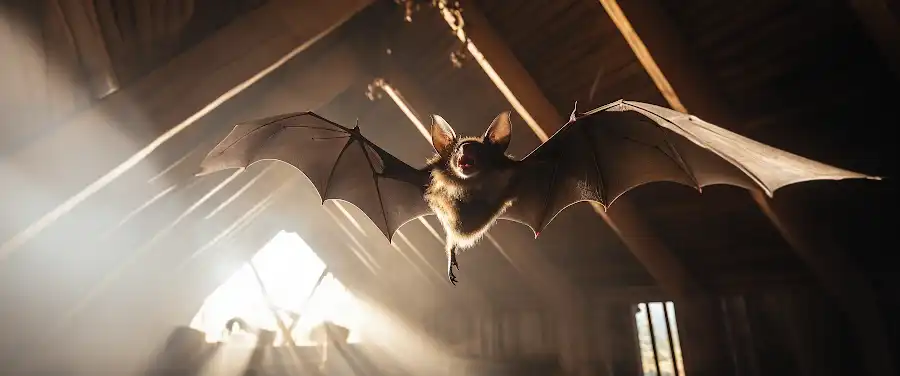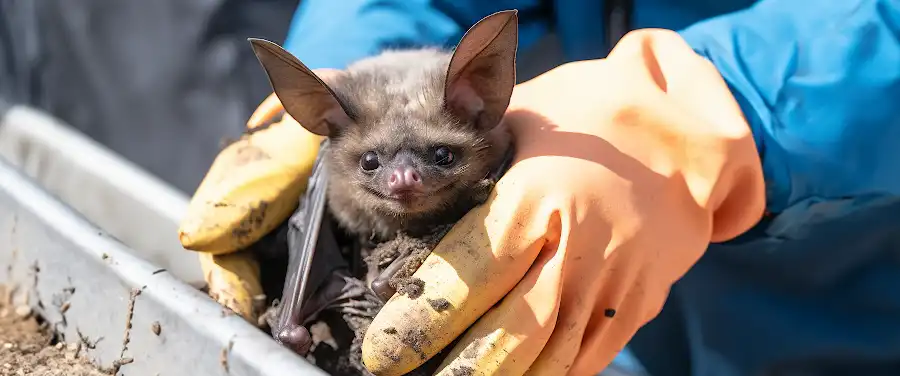
Squirrels – they’re cute, they’re fuzzy, but when these bushy-tailed creatures make their way into your home or garden, they can rapidly transition from charming woodland critters to nuisance wildlife. Your peace can be disrupted by the squirmy invaders, as they are brilliant in turning your space into their playground. Encountering a squirrel problem, whether it’s nibbled fruits in the garden, mysterious rustling noises in the attic, or simply one too many squirrels scamper around the patio area, may leave you desperately searching for squirrel removal techniques.
The purpose of this article, dear readers, is to guide you through some practical, DIY techniques that can help regain control over your surroundings. Trust us, you don’t need to be a wildlife expert or a superhero to effect squirrel removal. All you need is a solid understanding of what works and the commitment to follow through. Keep in mind that educating yourself about the right techniques is the first and the most critical step in resolving any squirrel problems.
Now, you might be asking why is understanding squirrel removal techniques so important? Well, the key reason is that it goes beyond simply getting rid of an unwanted guest in your home or yard. It’s an approach that represents a subtle balance between maintaining a squirrel-free environment and treating these animals humanely. This, my friends, we believe is a responsibility that every homeowner should undertake to maintain a peaceful coexistence with the nature around them. Now that we’ve set the stage to dive a bit deeper, let’s introduce ourselves to the different types of squirrels that are commonly found in our homes.
Why Might You Need to Consider Squirrel Removal?
If you happen to notice some strange occurrences around your property like chewed electrical wires, gnawed bird feeders, or erratic noises in the attic, you might be dealing with none other than a squirrel invasion. This is where squirrel removal techniques come in as a critical line of action. You see, squirrels can be a nuisance, and they are capable of causing a tremendous amount of damage addressing which has cost homeowners across the US about $2 billion annually.
Damage to Property
One of the main reasons to consider squirrel removal is the significant damage these small creatures can cause. Known for their persistent gnawing, squirrels can chew through electrical wiring and wooden structures, posing potential fire hazards. Additionally, the squirrel damage extends to outdoor property too, such as bird feeders and garden plants, which they decimate in their search for food.
| Type of Damage | Consequence |
|---|---|
| Chewed electrical wiring | Potential fire hazards |
| Gnawed wooden structures | Structural damages |
| Devoured garden plants | Loss of floral beauty, reduction in property aesthetic |
Spread of Diseases
Squirrels aren’t just home destroyers; they’re potential health risks too. They can be carriers of various diseases such as Lyme disease and leptospirosis that can have serious health implications for humans. Their droppings also pose possible risks, as they’re known to carry salmonella and other bacteria that can infect humans and pets.
Disruption of Peace
Let’s not forget about disruption of peace. Squirrels are active animals. They’re constantly on the move, and this can cause disturbances, especially if they’ve made their home in your attic or walls. From scratching noises at odd hours of the night to the clamor of them running around, squirrels can cause quite the disturbance.
Regaining control of your peaceful home domain necessitates adopting efficient squirrel removal techniques. A harmonious home remains a treasure worth safeguarding for all inhabitants.
In the light of all the above, it’s easy to understand why squirrel removal is important. Dealing with a squirrel invasion promptly not only helps to halt the continuation of damage to your property but also reduces potential health risks. If you need assistance distinguishing between normal activity and signs of squirrel presence, the coming section: ” What are the signs that you have a squirrel infestation?” will prove both enlightening and beneficial.
What Are the Signs That You Have a Squirrel Infestation?

If you’re suspecting a squirrel infestation, your hunch could be spot on. They are indeed nimble, agile and charming creatures; however, they could wreak havoc if they decide to call your property home. But how do you actually know you have an infestation? Below are some signs to confirm your suspicions.
Noise
Probably the most unmistakable sign of a squirrel infestation is the noise that they make. Their activities, mostly scampering, gnawing and scratching, can produce a whole symphony in the silence of the night or the early hours of dawn. Higher pitched noises, somewhat similar to birds-chirping, mean there’re baby squirrels, which could be a sign of a severe infestation.
Studies indicate that squirrels are most active during the day. They rest during the night and may occasionally awaken to scatter food about. So, if you hear noise during the day, especially in the morning or late afternoon, your bait is likely a squirrel.
Damage
Outdoor indicators
Squirrels are famous for their damaging abilities, primarily seen outdoors. They are notorious for digging up garden beds, stealing bird seeds, gnawing your fences or sheds, and stripping the bark off trees. Another clear signal is the squirrel paths, which are visible via dug-up tracks in grass and plant beds.
Squirrels can also cause severe damage to houses and structures by chewing outdoor objects like alum siding, lead flashing, or even the external woodwork of bbq pits, to sharpen their teeth.
Damage to Electrical Systems
The squirrels are equally destructive indoors. They exhibit their presence by damaging items like insulation materials, stored products, electrical wiring, and even beams. Anything soft, like your favorite couch, is not exempt from their gnawing spree either!
Visible small size droppings, comparable to large rice grains, and traces of urine are additional household indicators of a squirrel infestation. Their droppings are more rounded at the ends than rats, for instance.
In conclusion, identifying a squirrel infestation is not rocket science. Though they’re deceptively charming creatures, their uninvited presence can cause considerable damage to your property. The alarming signals are their peculiar noises and predominantly their destructive patterns indoors and outdoors. Only with the accurate detection, you can strategize the perfect squirrel removal techniques to regain control of your home and yard.
In our subsequent discussions, we’ll focus on a range of humane ways you can use to remove these adorable yet destructive critters from your property. So, if you’re grappling with how to do just that, stick around!
What Are Some Humane Squirrel Removal Techniques?

Are squirrels turning your peaceful home into a non-stop acorn fest? You’re not alone. Every year, many homeowners seek humane ways to deal with this issue. Whether it’s the scratchy sounds they make in your attic or their destructive tendencies, controlling squirrels can be a necessary measure for peace. However, it’s important to note that the methods used should not harm these small creatures. So, what are some effective humane squirrel removal techniques you can try? Well, here are three that work like a charm: using one-way exclusion doors, live trapping and relocation, and employing squirrel repellents.
Use of One-way Exclusion Doors
One-way exclusion doors are among the most humane methods for squirrel removal. This technique simply involves installing a special door that allows the squirrels to exit your home but prevents them from re-entering. These doors are typically mounted at the main entry and exit points that the squirrels use, like a hole in the roof, attic, or walls.
This method is perfect for busy homeowners because it doesn’t require constant surveillance. Once the door is installed, nature will take its course. In time, the squirrels will leave to seek food and won’t be able to return. This practical solution is favored by wildlife removal experts, and it might be just what you need to regain control of your home.
Live Trapping and Relocation
Live trapping is another popular method used in squirrel removal. This technique involves the use of a cage trap baited with tempting treats like nuts or fruits. When the squirrel enters the trap to enjoy the snack, the door mechanically shuts, securely capturing the animal.
The most critical aspect of live trapping is assuring the squirrel’s comfort until it’s set free. A trapped squirrel shouldn’t be exposed to harsh weather conditions or left without food and water. Most wildlife experts recommend checking the traps at least once a day. Once our furry friends are trapped, they should be relocated to a habitat that suits them, such as a forest or park at least 5 miles from your home.
Use of Squirrel Repellents
Using repellents is a less hands-on method of squirrel removal. There’s a wide range of squirrel repellents on the market, some of which use odors and tastes that are unpleasant to squirrels to keep them away from your property. For instance, capsaicin, the component that gives chili peppers their heat, is commonly used in squirrel repellents. These repellents can deter squirrels from gnawing on your property without causing them harm. But do these repellents really work?
According to a report by the Humane Society, the effectiveness of squirrel repellents remains somewhat murky. While some homeowners have seen positive results, others report that these methods are not entirely foolproof.
Humanely dealing with a squirrel problem requires patience and a heart for animals. Remember, these are living creatures, too, deserving of respect and kindness. The above squirrel removal techniques will not only help you reclaim your peace but also ensures the well-being of the squirrels involved. Now, let’s shift our focus toward another vital aspect of squirrel control — home adjustments to avoid squirrel infestations. Stay tuned!
Unveiling Squirrel Removal: DIY Techniques to Regain Control
Squirrels can often invade our households or gardens, causing damage and creating a nuisance. They have been known to nibble through electrical wires, and home structures, while their relentless digging can ruin beautiful landscapes. If you are facing a squirrel invasion, it is important to know some do-it-yourself (DIY) squirrel removal techniques, that can help you regain control of your home and garden.
Install Barriers or Exclusion Devices
This is one of the most humane ways of dealing with squirrels. You can install barriers around your garden and specifically around trees, using material like metal flashing or hardware cloth. An exclusion device allows squirrels to exit your loft or sheath, but prevents them from getting back in.
Use of Repellents
There are numerous squirrel repellents available in the market. Some of these are natural repellents derived from the urine of squirrel predators. Naphthalene flakes also help, as the smell is supposed to be unpleasant for squirrels. However, note that some states have restrictions against specific types of repellents.
Hav-a-hart Traps
There are different types of traps available for trapping squirrels. Some of these cages are designed in such a way that once a squirrel gets in, the door closes, trapping the squirrel inside.
Modify Habitat
This method involves taking away the things that attract squirrels. For instance, you can seal all possible entries to your home, ensuring there are no easily accessible food sources and maintaining your garden regularly to discourage squirrel habitation.
Employ a Professional
If the infestation and damage are substantial, it may be wise to employ a professional. They have more knowledge on squirrel behavior and have specialised techniques to deal with the situation.
| Method | Description | Effectiveness | Suitability |
|---|---|---|---|
| Install Barriers or Exclusion Devices | Install barriers around key areas to exclude squirrels. | High | Best for gardens and open spaces. |
| Use of Repellents | Use repellents that deter squirrels. | Medium to High | Suitable for both indoor and outdoor use. |
| Hav-a-hart Traps | Trap the squirrel(s) in specially designed cages. | High | Ideal for indoor areas like attics and lofts. |
| Modify habitat | Make your home unattractive for squirrels. | High | Best as a preventative measure. |
| Employ a Professional | Hire professional pest control services. | Very High | Most suitable when infestations are severe or widespread. |
Conclusion
In recap, dealing with squirrel infestations can be quite challenging, but with the right techniques and a little patience, you can regain control of your home and garden. These practical squirrel removal techniques range from install barriers, using repellents, humane trapping, modifying habitats to employing a professional if the situation gets out of hand. Remember, prevention is better than cure; hence, undertake measures to keep your home unattractive for squirrels as much as you can. In conclusion, squirrel removal doesn’t have to be daunting anymore.




